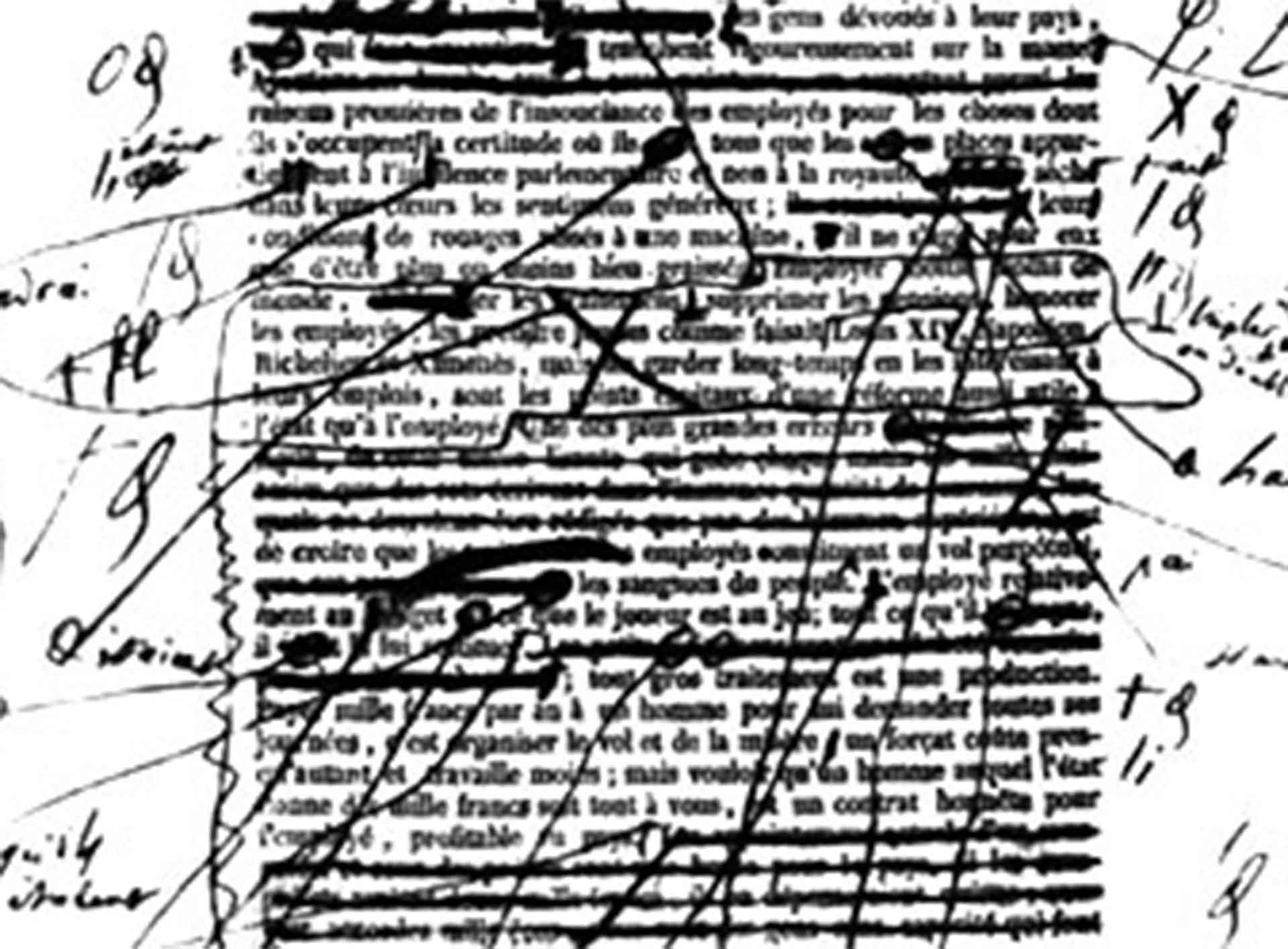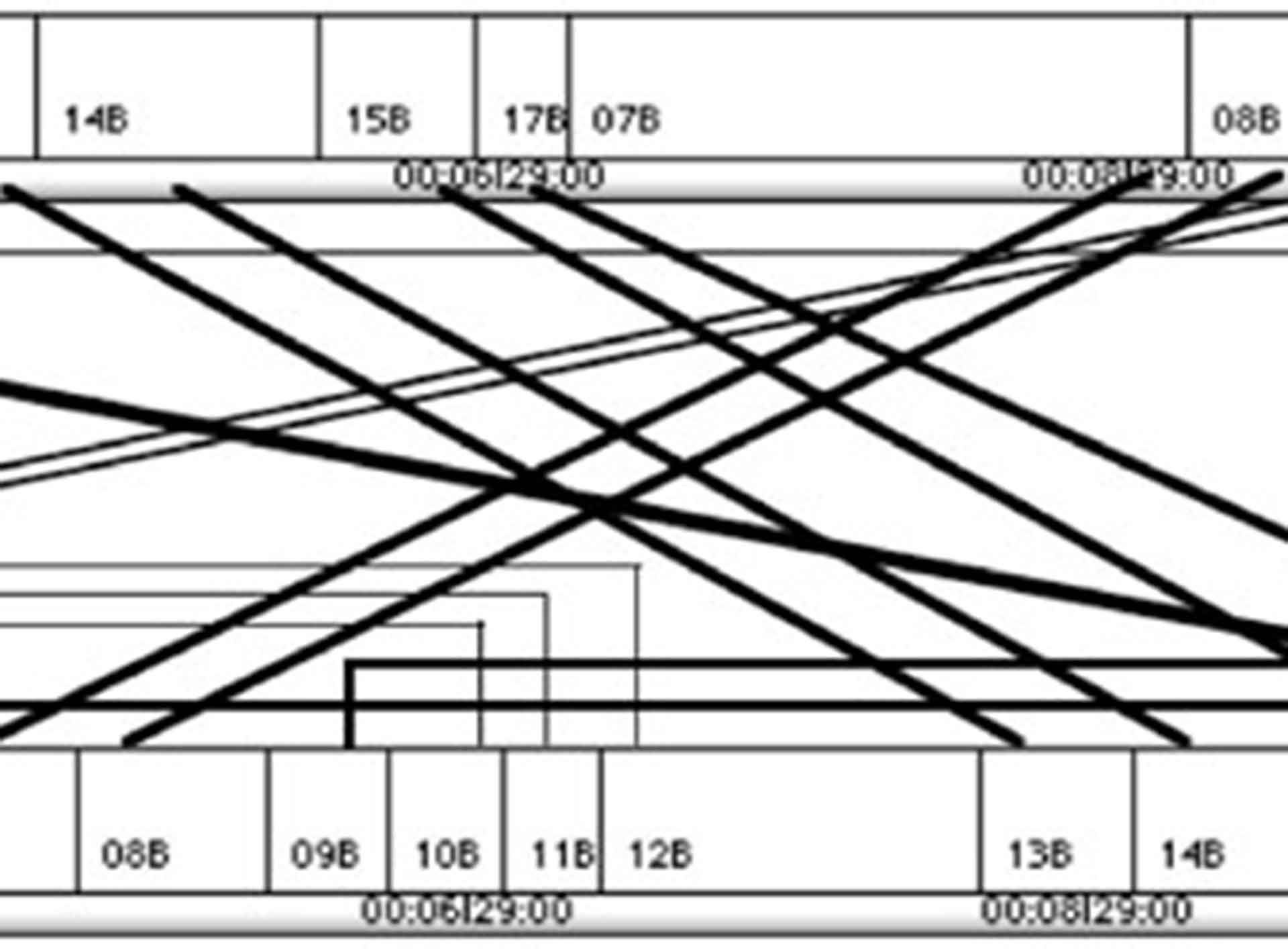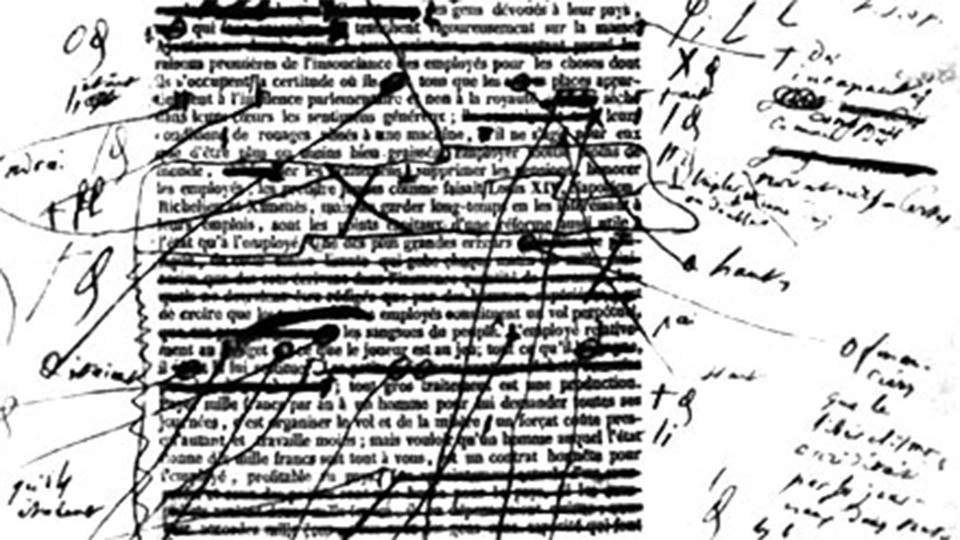Thoughts about the rules of editing
»Editing is about […] following your intuition and your feelings, trying and keeping a fresh eye, and always thinking that rules are made to be broken.«
Hervé Schneid

Manuscript of Honoré de Balzac

Transformation of Montage, Gerhard Schumm
As a writer and documentary filmmaker, writing and editing follows the same structuring process: one month writing or filming… then bringing the content into a new form, until it’s nearly another narrative. I move the things from one point to the other, until they are clear and exact and on the right place. At this point I also understand the structure of the work. When I edited my first documentary, I understood that here begins real art. Watching at Walter Murch working, I realized that this is the step of filmmaking where it comes the closest to the art of writing. (Michael Ondaatje in „Walter Murch and the art of editing film“)
Film editing has a strong relation to the final text editing, both work on linear strings: strings from words, strings from images and sounds.
Montage defines itself through choosing/ selecting and arranging/ imposing material. In detail the choise of material and process of arranging is based on six elemental procedures in digital editing systems:
- Assembling / overwrite / (end and beginning of strings)
- Disassembling / lift / (end and beginning of strings)
- Inserting / splice in / (inside strings)
- Eliminating / extract / (inside strings)
- Substituting / replace / (inside strings)
- Permuting / extract-splice in / (inside strings)Editing explores, variates and structures the form and the sense of material.
The objective is to change radical the string of sound and image. The editing tools help to structure the material systematically, to question the form and also the meaning. They are a technical tool, but they give the methods for emotional and rational awareness. With this tools you can realize a material sequence. If you feel that the sequence is still not right, you can explore the material and variate it. You can compare the differences: which one is more clear, which one has more secrets, which one has more suspense, which context gives more power, which contexts are more clearer in which version?and so on…
Every editor works diverse and questions the material differently. Every material asks for its special form of montage. The editor will find her way through the material.
There are no universal answers to find. Every film is different. The desire to find an overviewing, definitive, clear recept or rule must be unrequited.
This searching for the right articulation of the material is no trial and error. But it´s also no execution of instructions. For example a script for a fiction film is not a plan for editing. It is a concept for the actors and the filmteam. For the montage it´s a draft of ideas. There are no ways to facilitate the process. The work on montage is a material based searching, lead by ideas, wishes, intentions and awareness.
And how do we see this processes of montage in the end of a finished film? Nothing. We don’t see them. The edited film has a structure that can be seen. The final cut. But the way and how it was found remains invisible.
